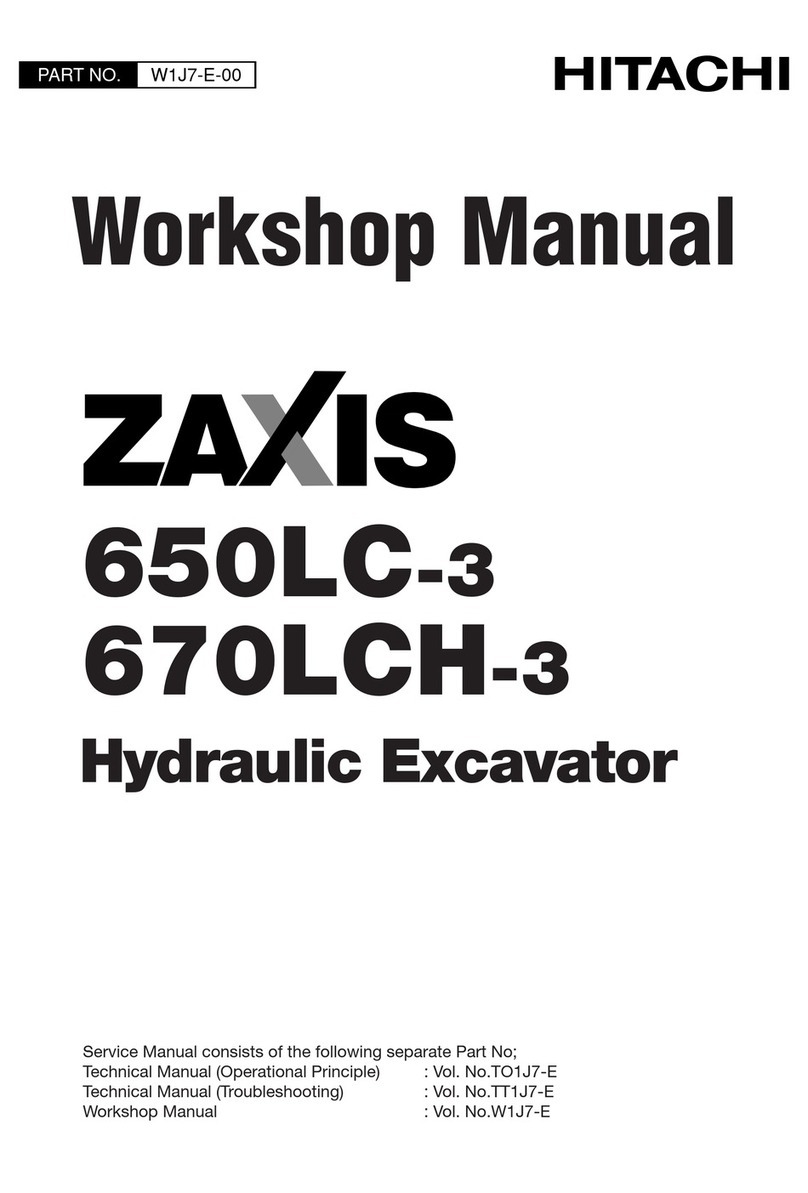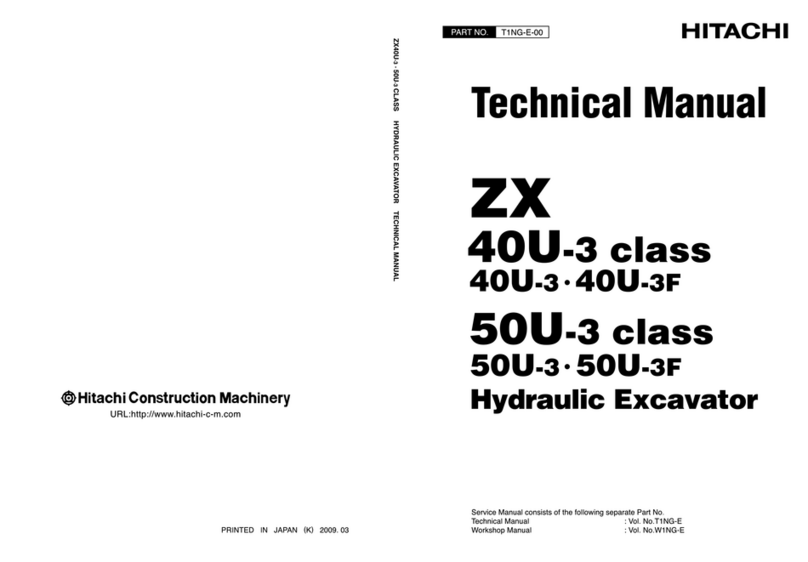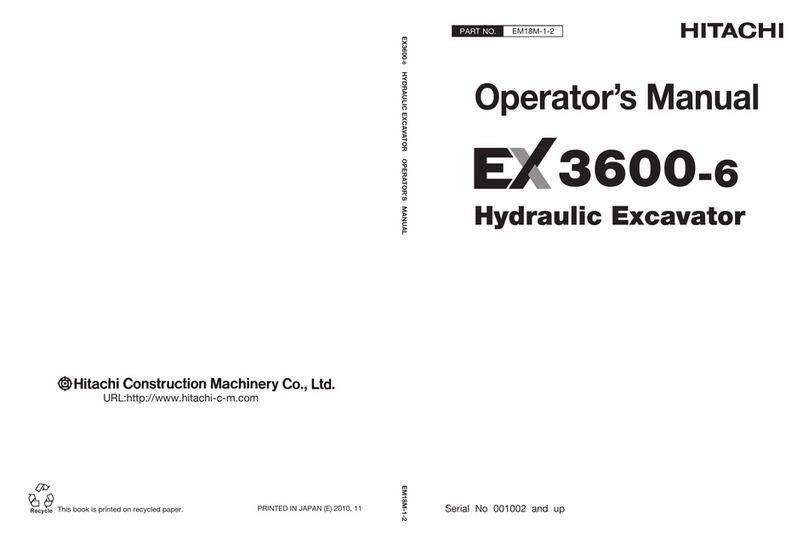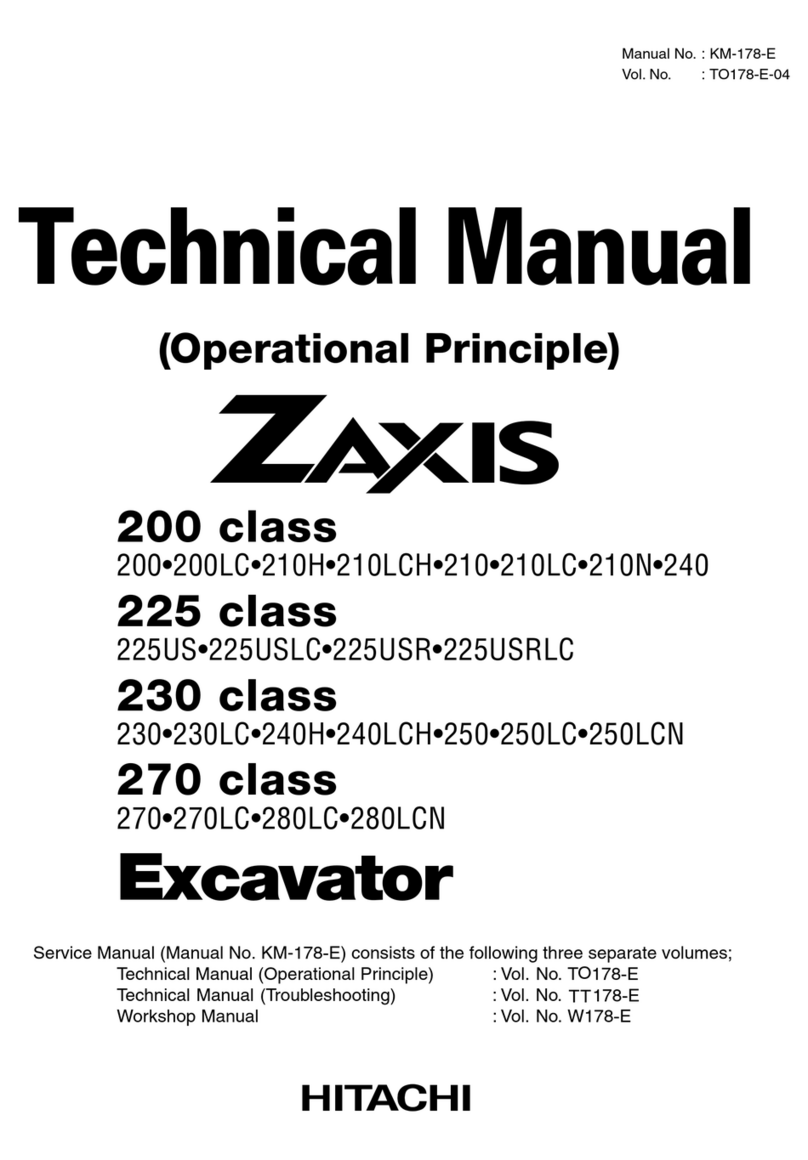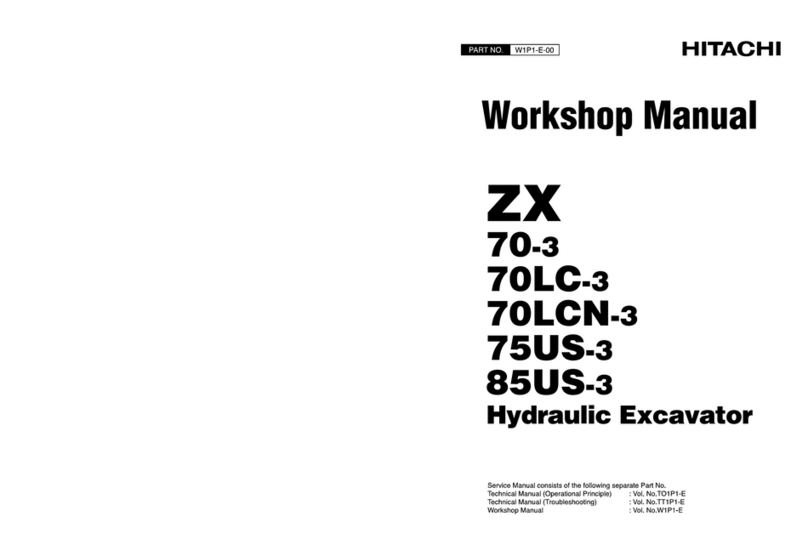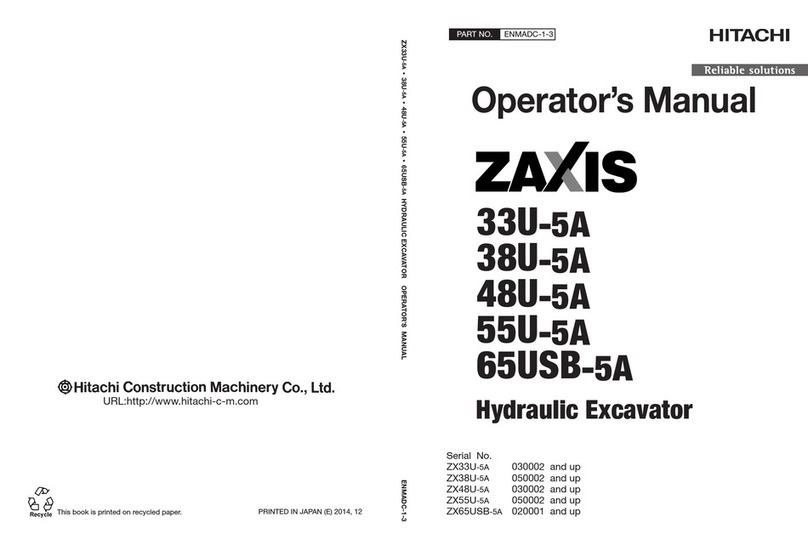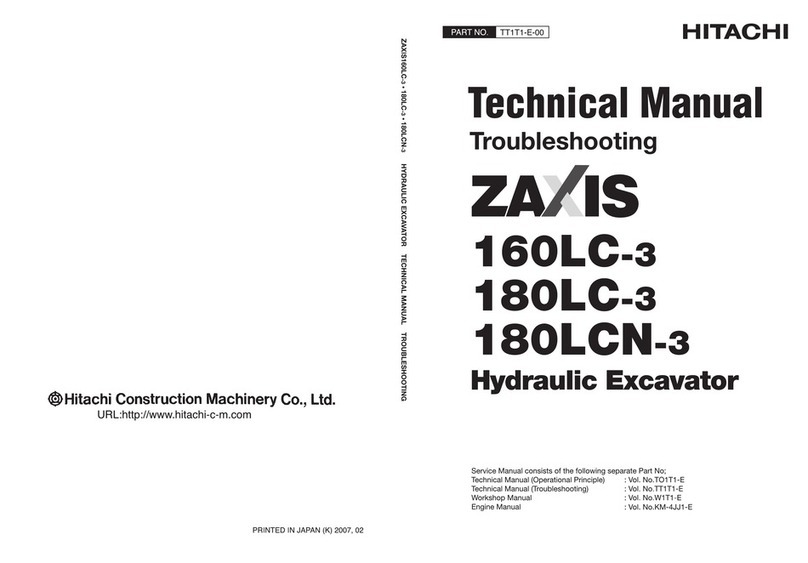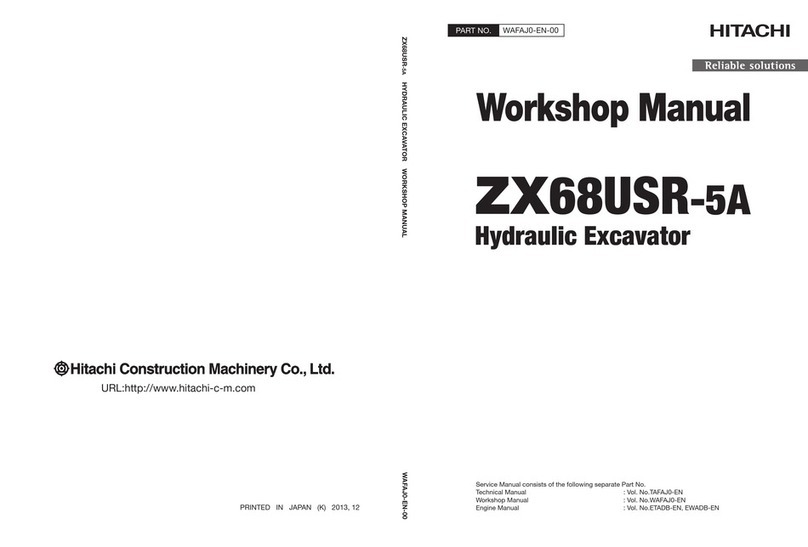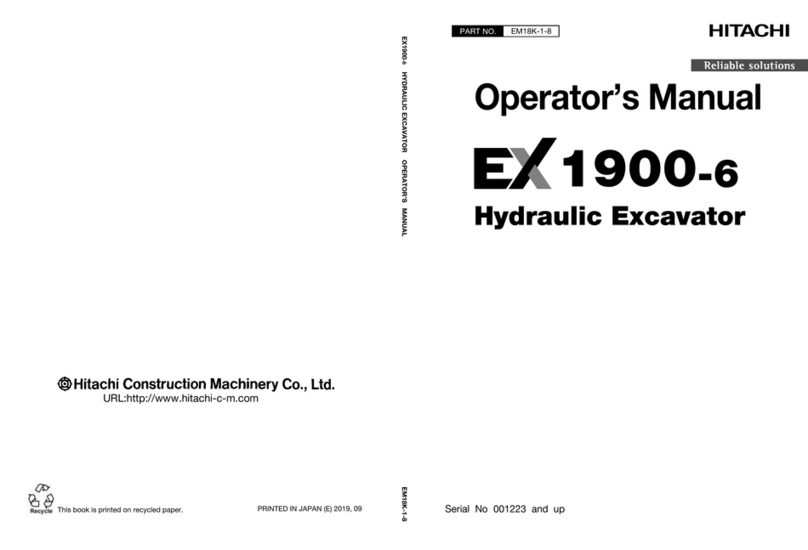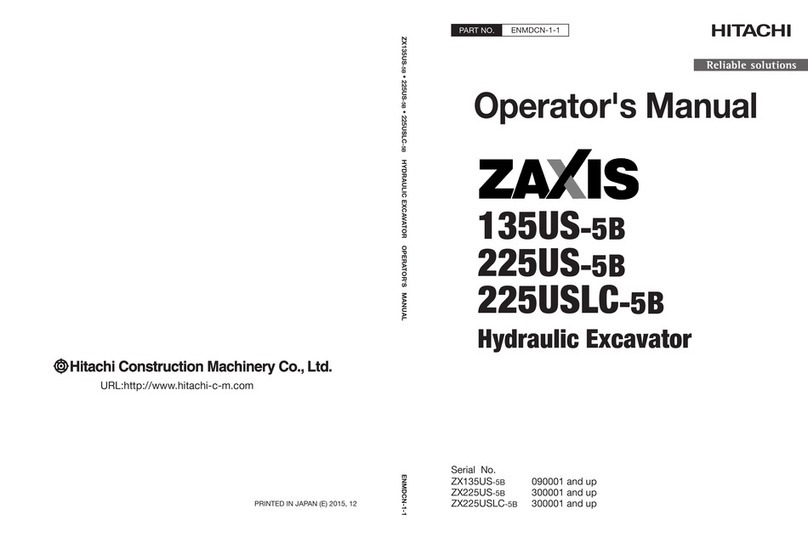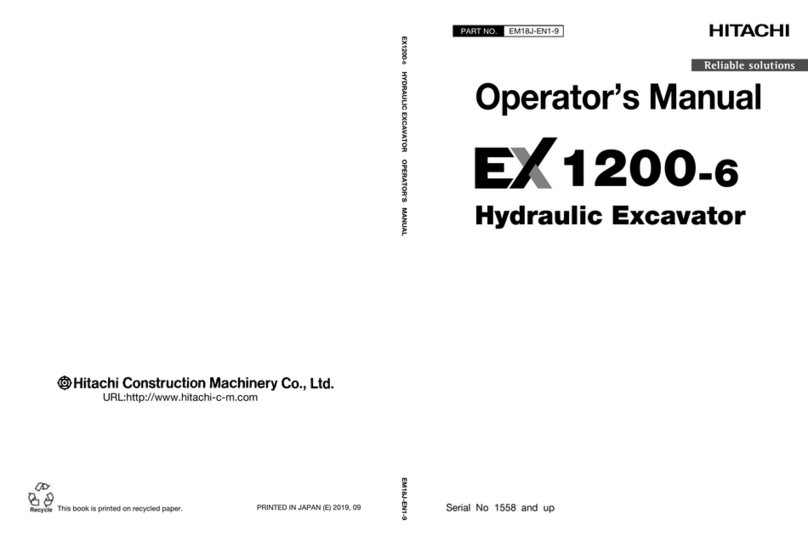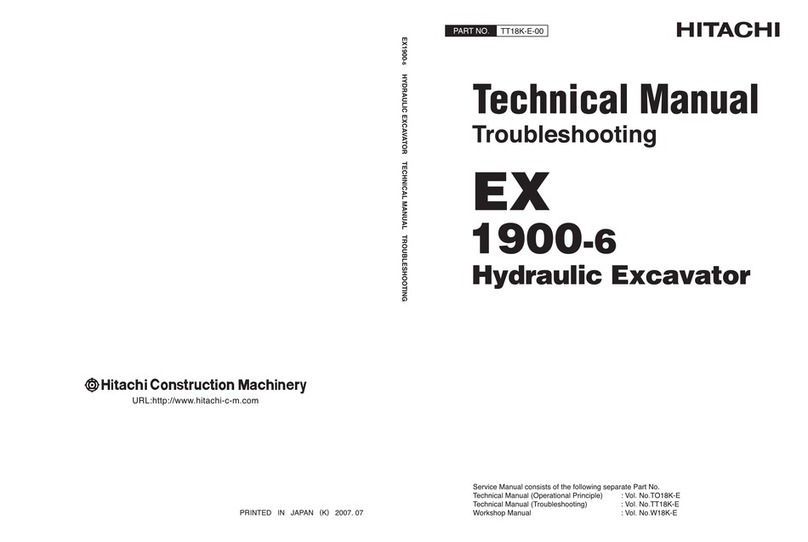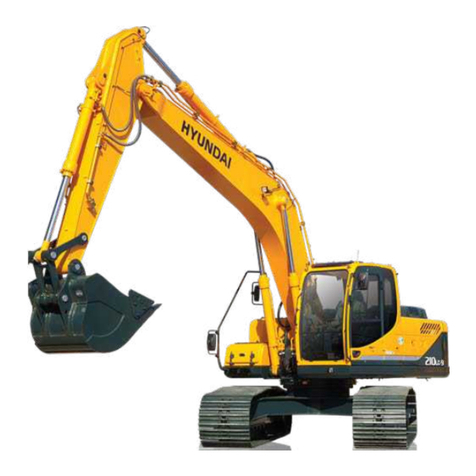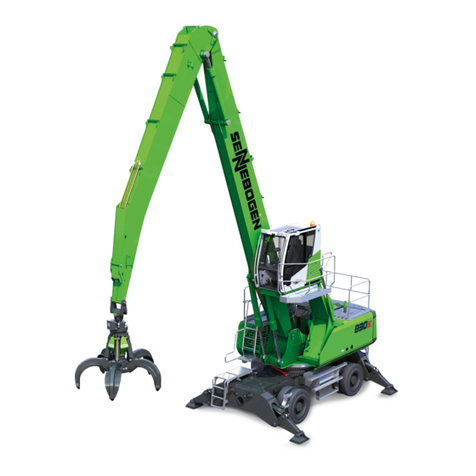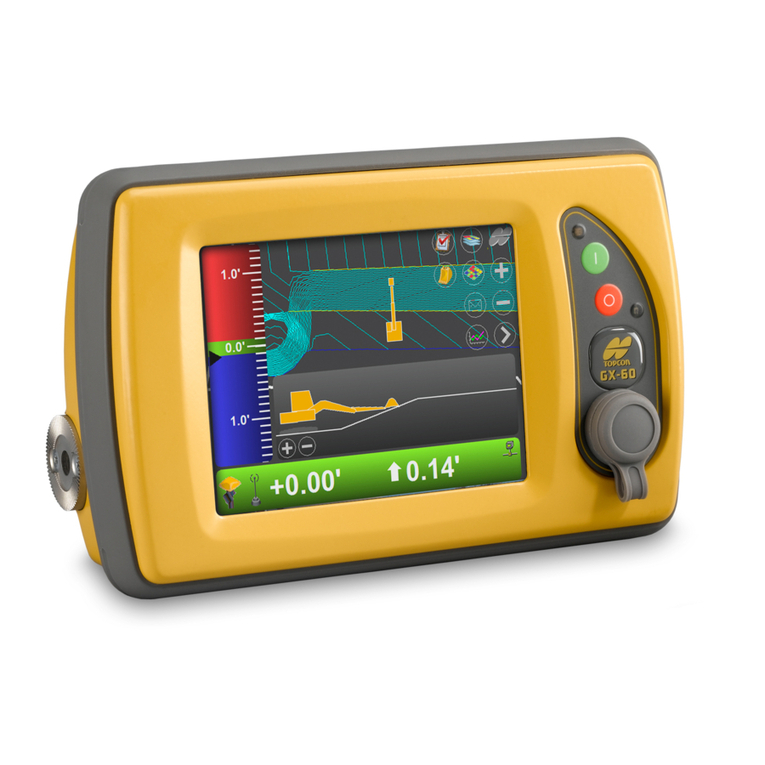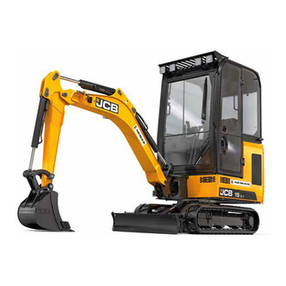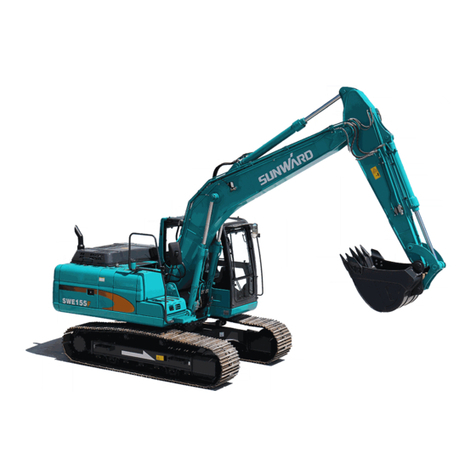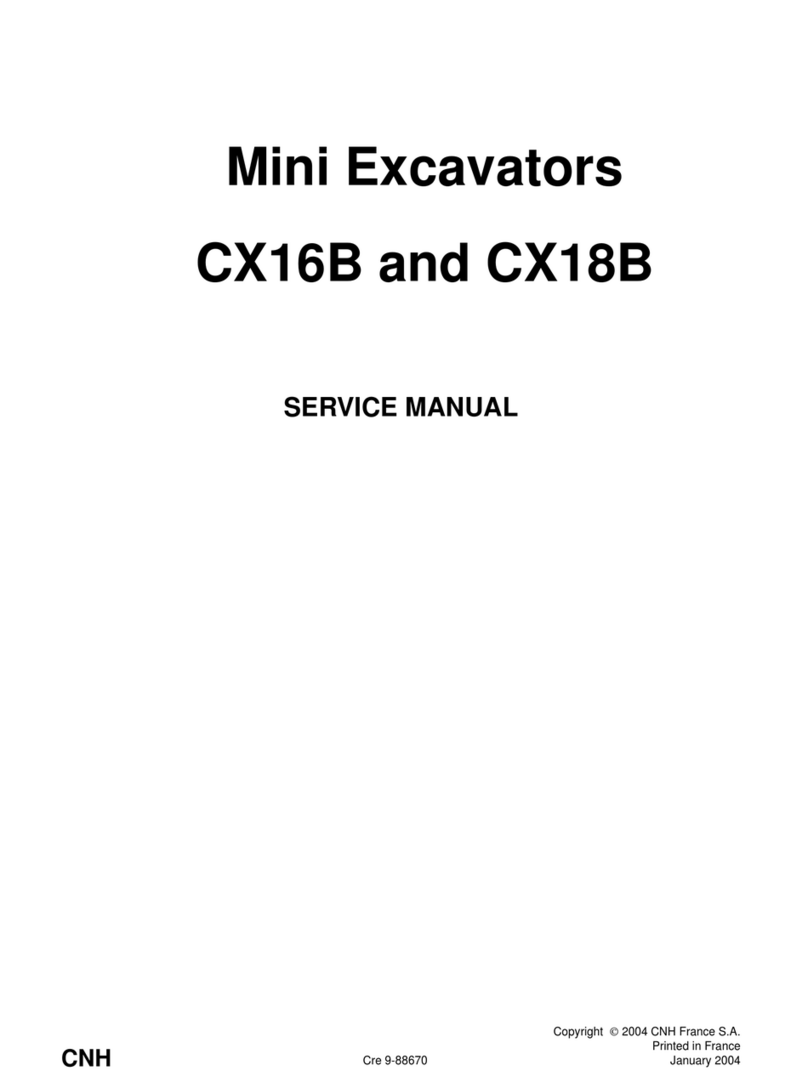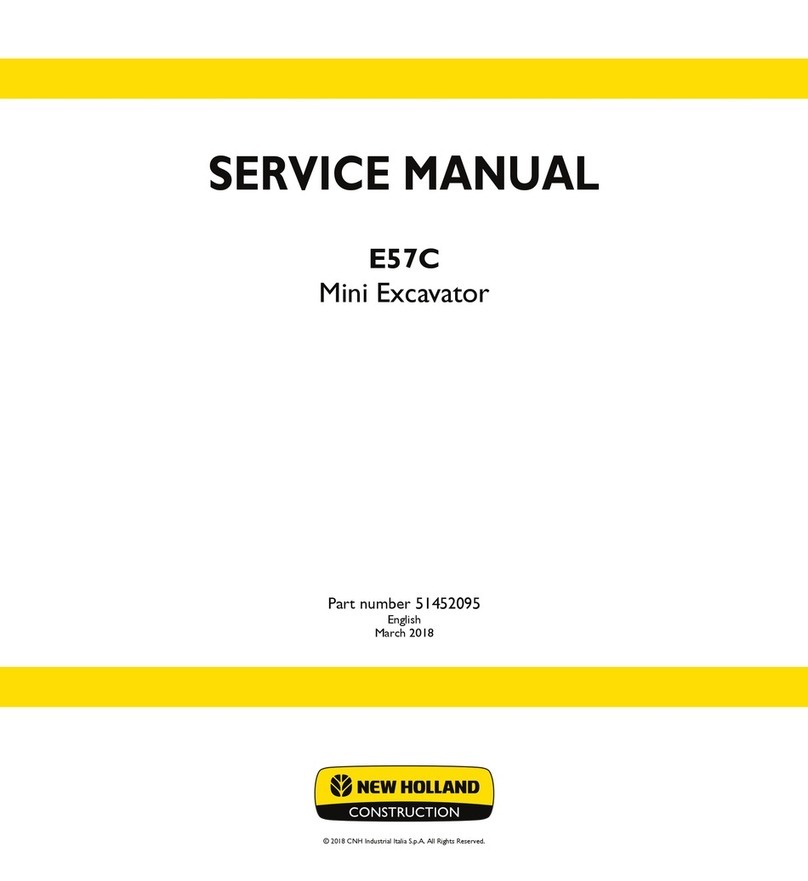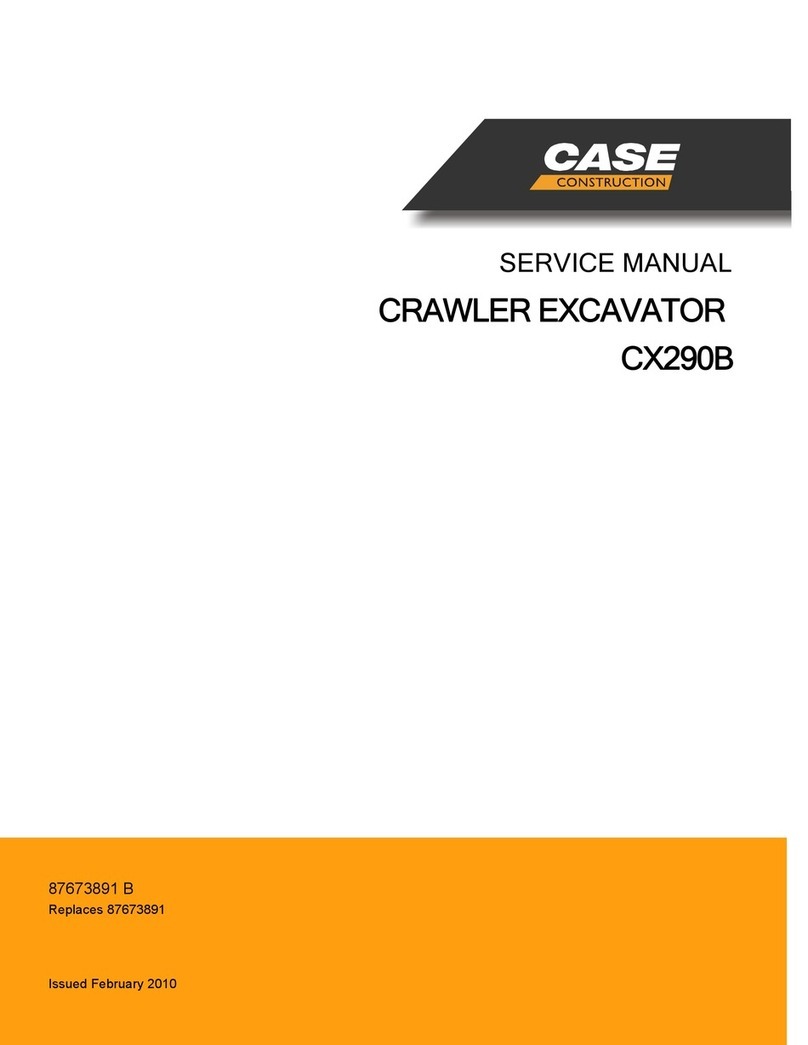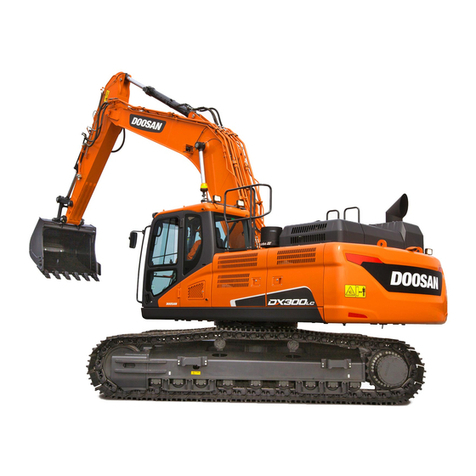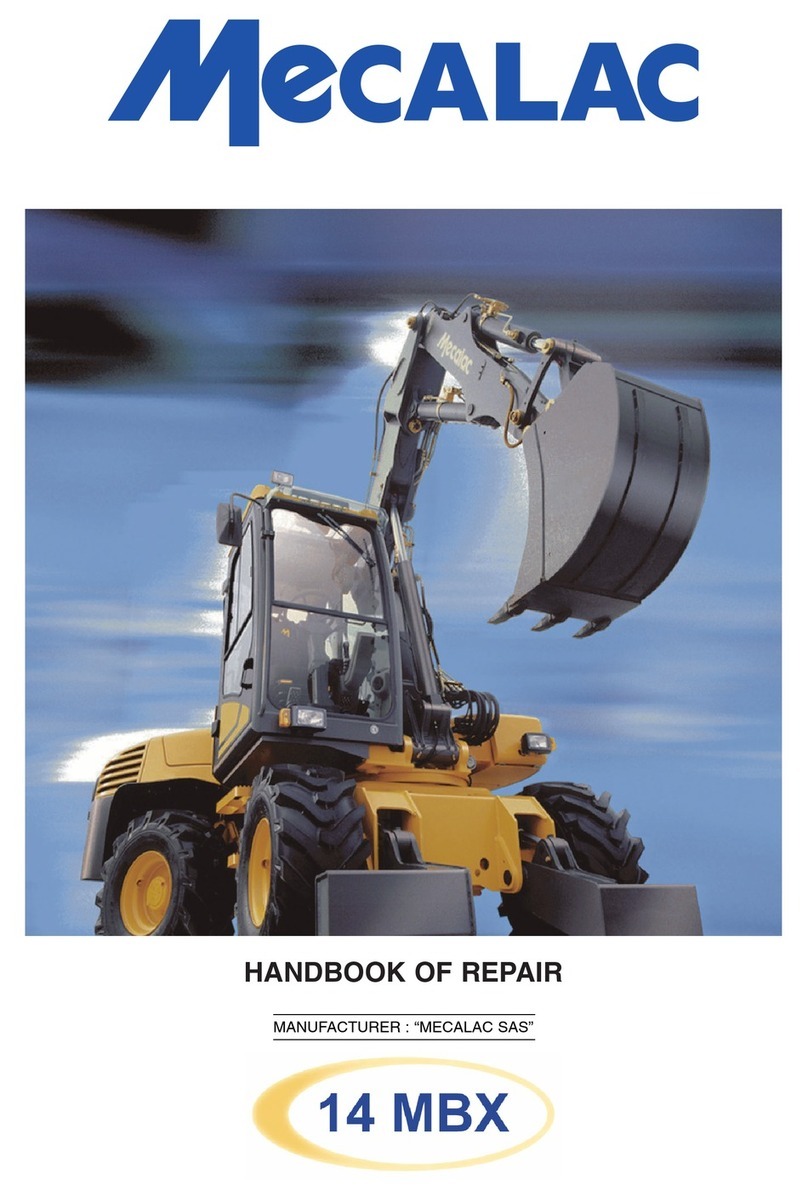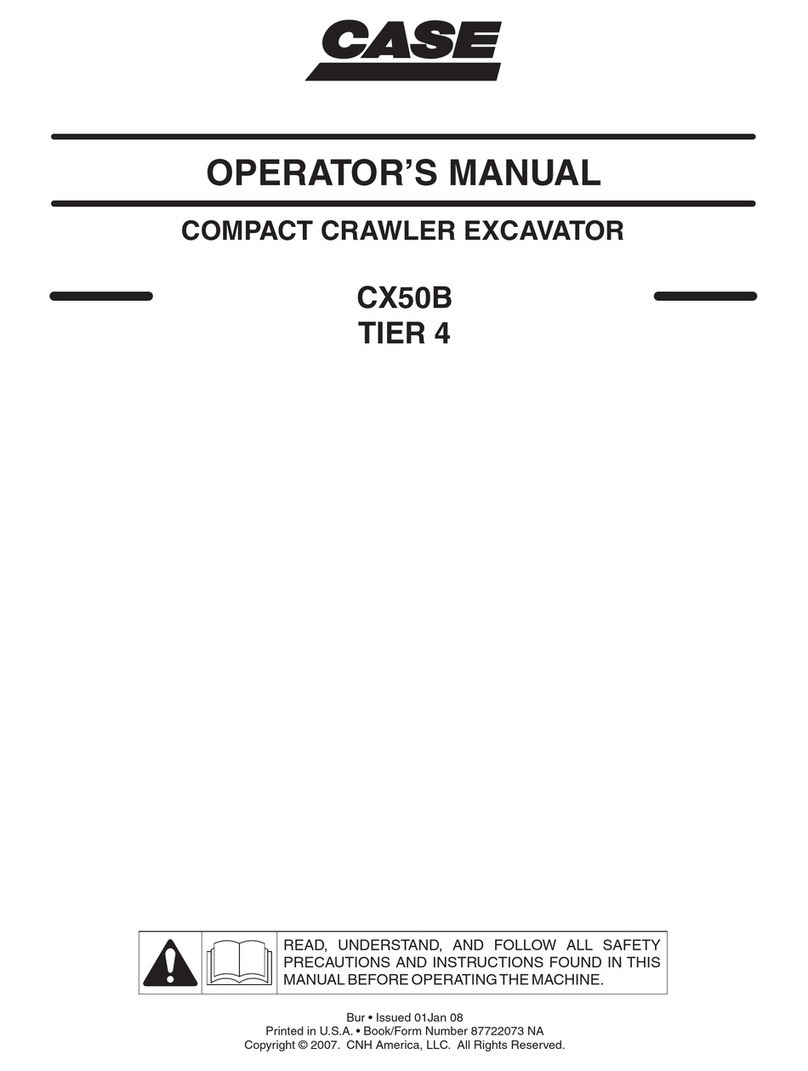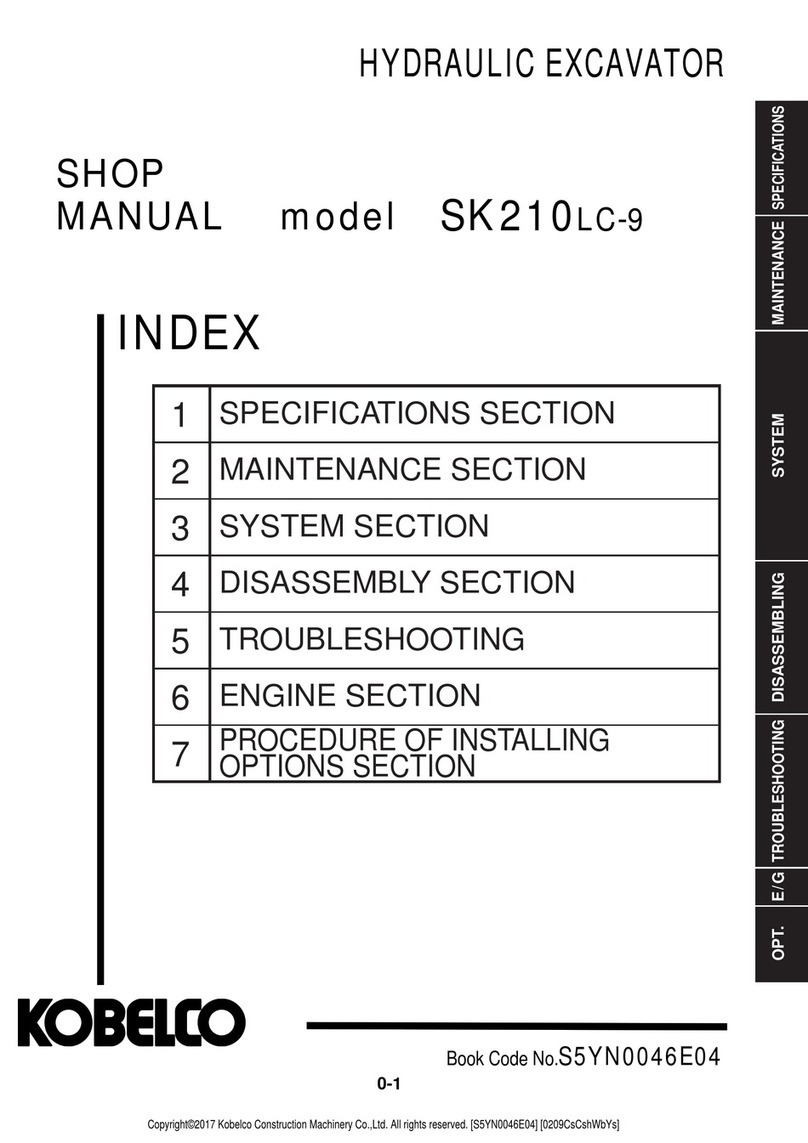
GENERAL / Precautions for Disassembling and Assembling
W1-1-2
Precautions for Assembling
Be sure to clean all parts and inspect them for
any damage. If any damage is found, repair or
replace part.
Dirt or debris on the contact or sliding surfaces
may shorten the service life of the machine. Take
care not to contaminate any contact or sliding
surfaces.
Be sure to replace O-rings, backup rings, and oil
seals with new ones once they are disassembled.
Apply a film of grease before installing.
Be sure that liquid-gasket-applied surfaces are
clean and dry.
If an anti-corrosive agent has been used on a
new part, be sure to thoroughly clean the part to
remove the agent.
Utilize matching marks when assembling.
Be sure to use the designated tools to assemble
bearings, bushings and oil seals.
Keep a record of the number of tools used for
disassembly/assembly. After assembling is
complete, count the number of tools, so as to
make sure that no forgotten tools remain in the
assembled machine.
Bleeding Air from Hydraulic System
When hydraulic oil is drained, the suction filter or the
suction lines are replaced, or the removal and in-
stallation of the pump, swing motor, travel motor or
cylinder is done, bleed air from the hydraulic system
in the following procedures:
IMPORTANT: If the engine is started with air
trapped in the hydraulic pump hous-
ing, damage to the pump may result.
If the hydraulic motor is operated
with air trapped in the hydraulic
motor housing, damage to the mo-
tor may result.
If the cylinder is operated with air
trapped in the cylinder tube, dam-
age to the cylinder may result.
Be sure to bleed air before starting
the engine.
Bleeding Air from Hydraulic Pump
Remove the air bleeding plug from the top of the
pump and fill the pump housing with hydraulic oil.
After the pump housing is filled with hydraulic oil,
temporarily tighten the plug. Then, start the en-
gine and run at slow idle speed.
Slightly loosen the plug to bleed air from the
pump housing until hydraulic oil oozes out.
After bleeding all the air, securely tighten the
plug.
Bleeding Air from Travel Motor / Swing Motor
With the drain plug / hose on travel motor / swing
motor removed, fill the motor case with hydraulic
oil.

